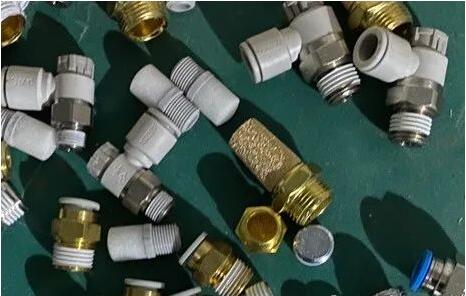How Does a Pneumatic Cylinder Speed Control Valve Work and Where Is It Applied?
Pneumatic Cylinder Speed Control Valve Overview
The pneumatic cylinder speed control valve, also known as the pneumatic cylinder velocity control valve, is a critical device designed to regulate the speed of pneumatic cylinder movement. This article delves into the operating principles and applications of this essential component in various industrial settings.

Working Principles of the Speed Control Valve
The speed control valve modulates the flow of air between the pneumatic cylinder and the air source to adjust the cylinder's speed. When the valve is closed, the cylinder's working port is linked to the exhaust port, allowing the air pressure within the cylinder to be released, thus halting its operation. Conversely, when the valve is open, the working port connects to the air supply port, which delivers air to the cylinder. The valve's ability to regulate air flow by adjusting its opening degree effectively controls the cylinder's speed.
Inside the speed control valve, an adjustable buffer mechanism is installed. By tweaking this mechanism, one can alter the cylinder's operating speed. A wider valve opening results in faster air flow into the cylinder and quicker movement, while a narrower opening slows down the air flow and the cylinder's speed. To cease the cylinder's operation, the valve is closed, releasing the internal air pressure through the exhaust port.
Applications of Pneumatic Cylinder Speed Control Valves
Pneumatic cylinder speed control valves are extensively utilized in a variety of applications that demand precise control over the speed of cylinder movement. For instance, in automated production lines, these valves can manage the grasping speed of robotic arms and the movement speed of workpieces, ensuring accuracy and consistency in the manufacturing process. They also play a vital role in robotics, logistics equipment, and packaging machinery, among other areas.
When employing a pneumatic cylinder speed control valve, it is imperative to select the appropriate valve model and parameters based on the specific application and requirements. Proper installation and calibration are also crucial to ensure optimal performance and to achieve the desired control outcomes.
Types of Pneumatic Cylinder Speed Control Valves
The primary types of speed control valves include the intake throttling valve and the exhaust throttling valve.
Intake Throttling Valves
These valves are primarily used to control the intake air flow of the cylinder, thereby adjusting its extension speed. They offer the advantage of easy speed adjustment for the cylinder but may result in less stable piston operation.
Exhaust Throttling Valves
Designed to control the exhaust air flow from the cylinder, these valves regulate the cylinder's retraction speed. Their ease of speed adjustment and the stability of piston operation make them a popular choice in circuit components.
It is important to note that even valves of the same model may have similar appearances and sizes, their functionalities and applications can differ. Therefore, careful selection and configuration based on the specific application scenario and requirements are necessary.
Selecting the Right Pneumatic Cylinder Speed Control Valve
When choosing a pneumatic cylinder speed control valve, several factors must be considered:
Control Precision Requirements
Select the appropriate type of speed control valve based on the control precision needed for the cylinder's movement speed in the application scenario. For higher precision requirements, opt for a high-precision speed control valve.
Cylinder Size and Stroke
The size and stroke of the cylinder are significant factors in determining the type of speed control valve to select. Choose a valve that matches and meets the control requirements based on the actual dimensions and stroke of the cylinder.
Working Environment and Medium
Consider the working environment of the speed control valve, including factors such as temperature, humidity, and pressure, as well as the characteristics of the medium used, like the type, temperature, and pressure of the gas. Select a valve with suitable materials and structure.
Installation Method and Space Constraints
Based on the installation method and space limitations in the actual application scenario, choose the appropriate type and size of speed control valve to ensure ease of installation and use.
Cost and Maintenance
While meeting control requirements, also consider the cost and maintenance expenses of the speed control valve, opting for a product with high cost-effectiveness.
Selecting the appropriate pneumatic cylinder speed control valve requires a comprehensive consideration of control precision, cylinder size and stroke, working environment and medium, installation method and space constraints, as well as cost and maintenance. In practical applications, refer to relevant selection guides or consult with professionals to choose the right type and parameters of the speed control valve that fit the specific needs and scenarios.




